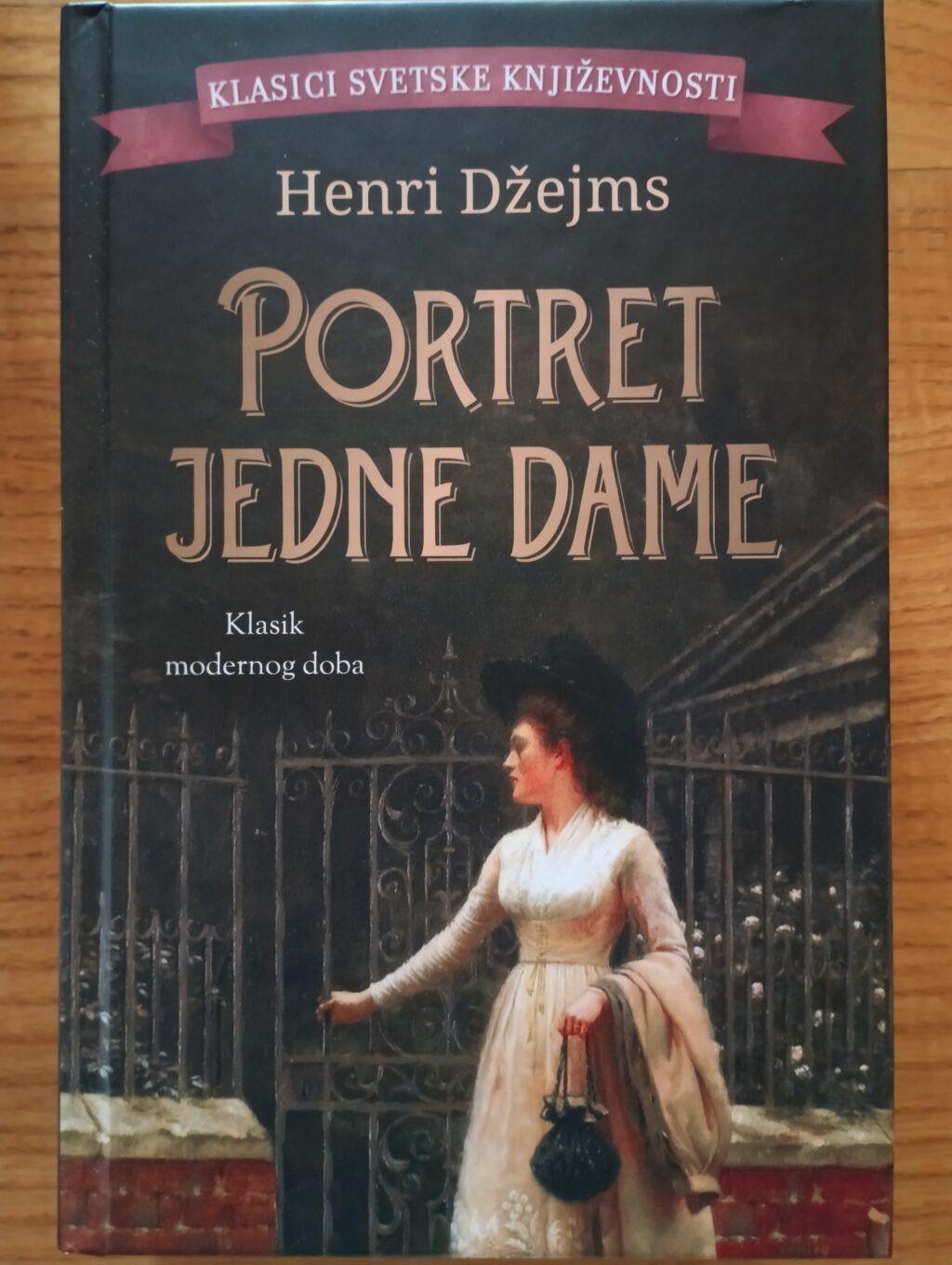The Portrait of a Lady (1881)

…………………………………………………
The Portrait of a Lady Book Review
The Portrait of a Lady is a novel by Henry James that was first published in 1881. It is one of the greatest literary works from this period.
………………………………………………….
“To live only to suffer — only to feel the injury of life repeated and enlarged —
it seemed to her she was too valuable, too capable, for that.
Then she wondered if it were vain and stupid to think so well of herself.
When had it even been a guarantee to be valuable?
Wasn’t all history full of the destruction of precious things?
Wasn’t it much more probable that if one were fine one would suffer?“
…………………………………………………..
…………………………………………………..
This novel was the pinnacle of James’s early career and it remains his best-known and strongest work. It is a story that has stood the test of time and is still wildly enjoyable and thematically intriguing. It’s a wholly engaging read and one of the most timeless books from the 19th century.
The story of a spirited young woman who becomes the victim of two American manipulators while living in Italy, Isabel Archer’s story is one for the ages. Through her incredible arc, the author explores a plethora of interesting themes and issues that were relevant for its era, thus making this work a time capsule in its own right. James depicts the differences between the Old World and the New World in quite an extensive manner. While there is clearly an obvious element of patriotism in his depiction of America and its people, James himself lived in Europe for quite some time, which gave him the necessary knowledge to write about the continent and the American expatriates living there back then.
Americans to this day value Europe for its culture, in particular art and architecture, and there is a strong element of fascination that the American characters hold for the continent throughout this story as well. Some of the European passages resembled a lovely travelogue, something that is rarely discussed when talking about this work. Old World values ultimately trap Isabel as she is too enamored with the continent’s culture to recognize their overly traditional lifestyles. Europe here is depicted as being pretty much stuck in the past while America is depicted as a country full of potential, a country with idealistic, but naïve inhabitants that are the total opposite of the calculated, hierarchical and traditionalist Europeans.
Wealth is depicted as a double-edged sword. While it clearly enables our protagonist to live the life that she wants, it also eventually leads to her downfall as she is too irresponsible and naïve when it comes to social and financial obligations. You should treat money very carefully is the moral of the story here. By far the most important theme of the novel is female independence and how marriage, especially of the Victorian variety, cannot ever co-exist with the personal freedom of women, freedom that is of the utmost importance to Isabel and that eventually proves to be elusive to her.
…………………………………………………..
…………………………………………………..
How Henry James portrayed women is quite admirable for a man as he perceptively understands the female psyche and that psychological insight into the protagonist’s mind in particular is the book’s biggest strength. James truthfully depicted that even men were crippled by social conventions and expectations – everybody was hurt by the Victorian mores. Even more importantly is the manipulations that Isabel endured not just by the hands of Osmond, but also Madame Merle, showcasing effectively how women themselves were also the culprit to their continued dependence on men. That rift between freedom and obligations that Isabel experiences and eventually succumbs to the latter is the most tragic part of her arc.
Isabel Archer truly is an iconic literary character, one that felt incredibly well fleshed out and one that had a fully realized arc. There is something relatable in her constant striving to gather more knowledge and her complicated relationships with people who are different from her. This is a truly feminist story of the time, one that empowered women while still being hard-hitting in its realism. Initially, Isabel seems to be almost too perfect to be real – highly intelligent, empathetic and free-spirited – but eventually her one flaw gets the better of her – her naivety and inexperience in social situations. Similarly to Dostoyevsky, James is particularly adept at character work, dialogue and giving us an impressive psychological insight into each and every character with Isabel clearly being the highlight. The final third of the novel that focused solely on her inner turmoil was the best part of the book as it was so complex and so emotionally riveting.
Every single character in this roster was beautifully realized. Ralph is Isabel’s deeply caring, but sick cousin who holds feelings that aren’t just platonic toward her. His final scene was so touching and his character is by far the most admirable and human of the bunch. Gilbert Osmond and Madame Merle function as the antagonists of the piece and they are truly phenomenal. Osmond is at first quite likable in his admirable outlook on life that involves artistic pursuits and not working, but eventually it is revealed that all of his intrigue and sophistication are just a façade and he turns out to be a manipulator who is just after Isabel’s money. He almost becomes a sinister villain toward the end. As for Madame Merle, she is the very example of women possibly being their own biggest enemy as she is the sole culprit in Isabel’s tragic marriage. Her scheming manipulations made her quite horrendous, and although we do get to read about her sad backstory, it wasn’t enough to excuse her immoral behavior.
…………………………………………………..
…………………………………………………..
Although Isabel’s naivety in regards to her “friendship” with this horrible woman was almost implausible at times, it fitted perfectly with the Victorian era’s conventions that were all about fake politeness and earnestness. Lord Warburton and Caspar Goodwood both represented toxic men who would stop at nothing to get the woman that they want, the latter being annoyingly persistent in his courting efforts. Warburton ended up being the most likable of the three men who courted Isabel while Goodwood intriguingly evoked electrified sexuality in Isabel, sexuality that she had to fight against throughout the book. Henrietta is a wonderful character and a true friend to our protagonist while Pansy’s story is possibly the most heartbreaking one. James here ended up depicting so many different types of both men and women, clearly showcasing his immense knack at strong character work.
Henry James uses ellipsis in this work very effectively. In essence, this means that the most important plot points are for the most part omitted from narration. This was especially evident and powerful in the example of Isabel getting married. We do not really need to read about the marriage itself as the rest of the book tackles their newfound toxic dynamic effortlessly, but it also fits with the story’s message as by this point we are clearly as readers against this decision of hers, so in a way we lost Isabel both figuratively and literally.
James could write dialogue incredibly well as many conversations in the book are so riveting. There are numerous parts that I loved with the highlights being the scenes in Rome, the beginning that introduced us to our heroine in such an intriguing manner and that powerful ending that is more ambiguous than most would lead you to believe. There is a strong chance that she didn’t get back to her husband, but went to get Pansy to move away from him together with her. It’s that ambiguity and emotional intensity that really made this ending unforgettable.
…………………………………………………..
…………………………………………………..
If there is one thing that I disliked in The Portrait of a Lady, it’s the overly melodramatic streak in the last third of the story where James fully went into Dickensian territory with numerous twists and turns and pronounced emotional chaos. These passages certainly made the book juicy and so much fun to read, but it almost became too soapy for its own sake.











